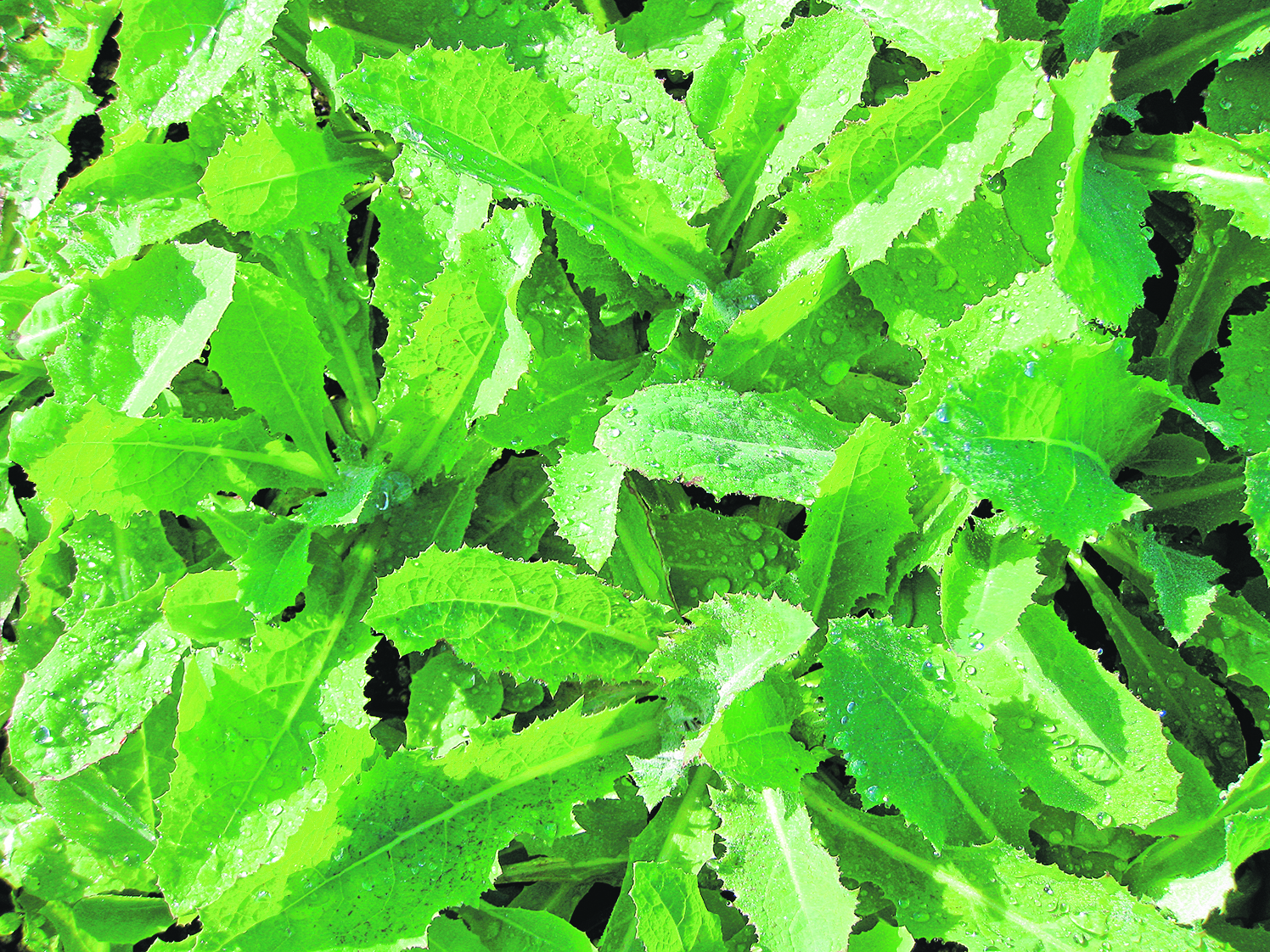Little-known natives rise up in the world

EXOTIC WEED: Native puha, Sonchus Kirkii, is an endangered species.
Contributed
A FEW little-known native plants are making it big on elite restaurant tables in our largest cities as garnish, salad ingredients and flavourings.
Apium prostratum – New Zealand celery has become a very popular garden plant; its tidy compact shape makes it great for small vegetable plots or raised gardens and is ideally suited to pots.
Its natural habitat is coastal, rock ledges, seepages and cliff faces throughout New Zealand. It tastes like the normal garden celery or parsley; the lush green foliage makes an ideal garnish and has a strong celery smell.
It seeds prolifically, so collection and sowing for the following year is easy, but often plants are perennial and revive in the spring warmth.
The celery gets to only a height of 30cm and in summer is covered in tiny white flowers, which are insect pollinated.

Tetragonia tetragonioides – New Zealand spinach is another amazing native plant. It is very coastal so suits the gardener who forgets to water, and is happy to ramble over the compost bin, or jump into your flower garden if not kept trimmed. Its natural habitat is in stoney back dunes, rock ledges, under pohutukawa trees and in coastal shrubland.
The more compost you add, the bigger the leaves get and can get as large as common spinach in size if looked after well.
If, like me, you don’t pay much attention to the spinach it will send out leaves the size of a smart phone, which are great eating in spring salads and wilted in stir-fries.
New Zealand spinach, or “kokihi”, is an ideal groundcover in dry gardens.
Under trees in semi-shaded areas it becomes a thick mat, which suppresses weeds and trimming keeps the growth fresh and tasty for the kitchen. The spinach is also available in a red form, which I found in Timaru years ago growing on a gravel beach. It is called Tetragonia “wildfire”.
These next two native edibles are under threat.
It’s a little-known fact that the puha on the side of the road is indeed an exotic weed – not a native.
The native puha, Sonchus kirkii, is an endangered species and listed as “At-Risk – Declining” by the Department of Conservation. Being endemic means it is found only in New Zealand nowhere else in the world.
A coastal plant species, it is usually found on cliff faces in or around damp seepages, but also often found on stabilised sand dunes, throughout estuary coastal scrub and herb fields, quarries, slips and newly cleared land.
Common up until the mid-1980s, it’s now missing, particularly in the North Island.
Puha was probably found in a wider range of habitats but has retreated to those less suited because of competition from other faster-growing introduced weeds and browsing animals.
Locally, it was recorded from Ōhiwa, where the hills meet the harbour edges, and anywhere along the coastline from Maketu to East Cape, but now the only known site is at Te Araroa, where a remnant population exists on private land and where it remains exposed to stock grazing and seaward erosion.

As a garden plant it is great; once you have it established it will seed in the first year, providing plenty of lush, tasty seedlings for the pot and a seed source, which will spread far and wide in the wind.
Plants can get to 1 metre in height, but unlike the introduced species they apparently don’t require beating before boiling to remove the bitterness.
They flower from August through to April and are a striking yellow.
I would like to encourage everyone to spread this threatened plant far and wide as it would be great to see it growing on our roadsides once more.
Lepidium oleraceum, nau or cook’s scurvy grass, is a coastal herb from the brassica family, and now classified as “Threatened – Nationally Endangered”.
Found only on the coast, nau is usually found in friable well-manured soils, guano deposits, or rock crevices associated with seabird roosts and nesting sites.
Occasionally it grows under taller vegetation, and then usually near petrel or shearwater burrows.
The species is now mainly found on rock stacks and windy headlands on rodent-free offshore islands.
In some places it has been found growing on sand or gravel beaches, and in one location it grows on boulders and clay that are part of an artificial sea wall.
Said to have been eaten in abundance when the first sailors arrived in Aotearoa to fight off scurvy, it has a definite brassica flavour, although because of its threatened status, it is safe in my garden.
-Jo Bonner
Coastlands Plant Nursery